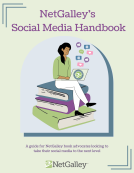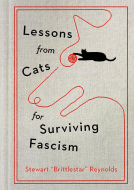
Beyond Bias
How to Fix the System, Not the Symptoms, of Gender Inequality at Work
by Andrea S. Kramer; Alton B. Harris
This title was previously available on NetGalley and is now archived.
Send NetGalley books directly to your Kindle or Kindle app
1
To read on a Kindle or Kindle app, please add kindle@netgalley.com as an approved email address to receive files in your Amazon account. Click here for step-by-step instructions.
2
Also find your Kindle email address within your Amazon account, and enter it here.
Pub Date Sep 28 2023 | Archive Date Oct 03 2023
Nicholas Brealey US | Nicholas Brealey Publishing US
Talking about this book? Use #BeyondBias #NetGalley. More hashtag tips!
Description
Despite extensive and costly diversity initiatives, little progress has been made in recent years in ending workplace gender inequality. Beyond Bias presents a compelling explanation of the reasons for this failure. Current diversity initiatives focus primarily on “teaching” people to be less biased and more inclusive. But this is the wrong focus. As Beyond Bias make clear, workplace gender inequality is a systemic problem caused largely by the (unintended) discriminatory operation of personnel systems, policies, and practices. Beyond Bias presents the four-prong PATH program for directly attacking this structural discrimination—and with it, individuals’ discriminatory conduct:
• Prioritize Elimination of Exclusionary Behavior
• Adopt Bias-free Methods of Decision-Making
• Treat Inequality in the Home as a Workplace Problem
• Halt Unequal Performance Evaluations and Leadership Development Opportunities
In the authors’ characteristically clear and engaging style, Beyond Bias lays out a comprehensive set of actions that organizations can take to ensure women no longer encounter gendered obstacles to their career advancement and find their workplaces engaging, supportive places where they—and everyone—can thrive.
Advance Praise
“Beyond Bias offers a curated introduction to the literature on workplace gender bias, and many concrete steps organizations can take to interrupt bias by providing more structure in their business systems.”
--Joan C. Williams, Author of Bias Interrupted: Creating Inclusion for Real and for Good, Harvard Business Review Press, 2021
“Beyond Bias’s actionable best practices equip leaders with the tools to create an equitable and more productive workplace that allows everyone to thrive. The “must read” for every leader who is serious about positioning their organization for success in the 21st century!” --David G. Smith, PhD, Johns Hopkins University & W. Brad Johnson, PhD, U.S. Naval Academy, authors of Good Guys and Athena Rising
“Finally, a book that tackles workplace gender inequality at the root of the problem. Grounded in solid research, this book is a must for leaders determined to improve business results by fostering deeper engagement from both men and women.”--Carol Frohlinger, President, Negotiating Women, Inc.
“Beyond Bias is a timely, powerful, and compelling book. In it, Kramer and Harris provide a clear and do-able PATH to create a business climate where people feel trusted and appreciated; one where DE&I is more than hope—it becomes a reality.”--Andi Simon, Ph.D. Corporate Anthropologist and CEO Simon Associates Management Consultants
“Here it is! We’ve long been in pursuit of creating a bias-free workplace—what is needed to unlock so much potential and profit for our businesses. Yet so many companies have put in place huge efforts that have failed. Through their PATH program, Andie and Al show us how big goals are met through small wins. Focus on the seemingly small practices they outline that compound over time, and you and your organization will reach the goal we all seek.”--Lee Caraher, CEO, Double Forte, Author of Millennials & Management and The Boomerang Principle, and host of Everything Speaks
Available Editions
| EDITION | Other Format |
| ISBN | 9781399801485 |
| PRICE | £20.00 (GBP) |
| PAGES | 256 |
Available on NetGalley
Average rating from 9 members
Featured Reviews
 Sara M, Reviewer
Sara M, Reviewer
The premise for this book is interesting - challenging the dominant 'equality and diversity training' approach. I think it's a hard thing to get right, doing this without pretending that structural issues don't exist.
The authors have already written about how women can navigate a hostile system, so this is about how to change that system.
I can picture HR professionals finding it useful because it has practical steps to take, and the structure is laid out in a logical way.
In terms of the structural issues, they advocate for treating inequality in the home as a workplace issue, and this is in line with the direction policy seems to be going in.
All in all, there isn't much else out there like this. It's worth a look.
 Jasmine M, Reviewer
Jasmine M, Reviewer
I greatly enjoyed reading this, and it's a great expansion of Kramer and Harris' previous books that tackle more from an individual perspective on how to improve things yourself. Beyond Bias is arguably more aimed at those doing the hiring as opposed to the employee, but is packed with facts and stats which whilst US-centric I found enlightening if not somewhat disheartening as a millennial woman with a Masters degree, who found it hard to get on the ladder within the sector I studied.
I also found the segment on the pandemic intriguing in the result of the gender gap widening and being associated with the second shift. Definitely a read to pick up for learning more about gender inequality in the workplace.
The book makes clear that there is a vicious circle of the structural discrimination inherent in gendered workplaces and the individual discrimination reflected in the behavior of individuals in those workplaces. Structural discrimination leads to unequal workplace outcomes for women and men. The gender stereotypes and status beliefs that drive these unequal outcomes foster individual discrimination. People in these workplaces incorporate expectations of unequal gender outcomes into their own attitudes, judgments, and behaviors.
This conduct, in turn, strengthens the persistence of structural discrimination. As a result, there is a process of mutual reinforcement of structural and individual discrimination, a highly pernicious process that most organisations’ DEI initiatives have been unable to counter.
But Beyond Bias doesn’t just theorise and present information in an academic fashion. Mounting a successful assault on gender inequality depends on a well‐conceived, properly resourced, and imaginatively led initiative and this is where PATH comes into play.
PATH is a four-prong program for directly attacking this structural discrimination—and with it, individuals’ discriminatory conduct:
Prioritize Elimination of Exclusionary Behavior
Adopt Bias-free Methods of Decision-Making
Treat Inequality in the Home as a Workplace Problem
Halt Unequal Performance Evaluations and Leadership Development Opportunities
PATH does not aim to reduce men’s leadership opportunities but rather to ensure that women’s opportunities are just as great. All we want to do it have the opportunity to fulfil our potential!
In brief-the book is excellent. Clearly written with a US audience in mind there is a lot here applicable to the UK context.
The first two chapters take stock of the situation-why the gender gap gets larger, the higher up the ladder and the limits of some of the initiatives that have been put in place to fix it. Kramer and Harris raise a compelling case that gender equality at work can only be addressed by acknowledging the systematic barriers of working women. They go on to outline the benefits of turning this around.
The book then goes on to set out their PATH method before examining how it can be embedded in to the processes and policies of organisation. There is a comprehensive change management plan which even goes so far as to look at potential challenges and practical ways they can be managed.
The thoroughness and practicality make it all seem possible. I particularly liked that the book explores our biases- how our unconscious beliefs (for both men and women) around the capabilities of gender shape how we show up in the workplace and how this impacts our opportunities to progress.
There is a lot of value in these pages. A must read.
Readers who liked this book also liked:
Jennie Batchelor, Julia Quinn, Natalie Jenner, Charlie Lovett, Talulah Riley, Janet Todd et al
Essays & Collections, Novellas & Short Stories, Women's Fiction










